Abstract
Marine bacteria removed two diamines, putrescine and cadaverine, from coastal seawater supplemented only with these compounds. Batch cultures of natural bacterial communities were grown in filtered seawater (0.05 μm) supplemented with 500 μg of putrescine or cadaverine per liter. Increases in bacterial cell number were counted with an epifluorescence microscope after acridine orange staining. Removal of diamines from seawater was monitored by high-performance liquid chromatography. Diamines were removed from the seawater cultures within 48 h with no corresponding increase in bacterial yield, growth rate, or viability relative to control (unsupplemented) cultures. Shipboard experiments with open-ocean deep water (1,500 m) showed similar, if slower, removal of putrescine from seawater. Unlike uptake experiments with amino acids, labeled putrescine experiments indicated that most putrescine carbon is mineralized to CO2 rather than assimilated by the bacteria. After growth in unsupplemented control cultures, the bacteria showed a significant potential to mineralize putrescine, indicating a general degradation potential for this compound by marine bacteria even if the compound was not present during growth. Indicators of metabolic activity such as glucose and glutamic acid uptake and mineralization were not affected by the presence of putrescine. This shows that at the concentrations added, the diamines are not toxic, and therefore detoxification was not the reason for degradation of the diamines by the bacteria.
Full text
PDF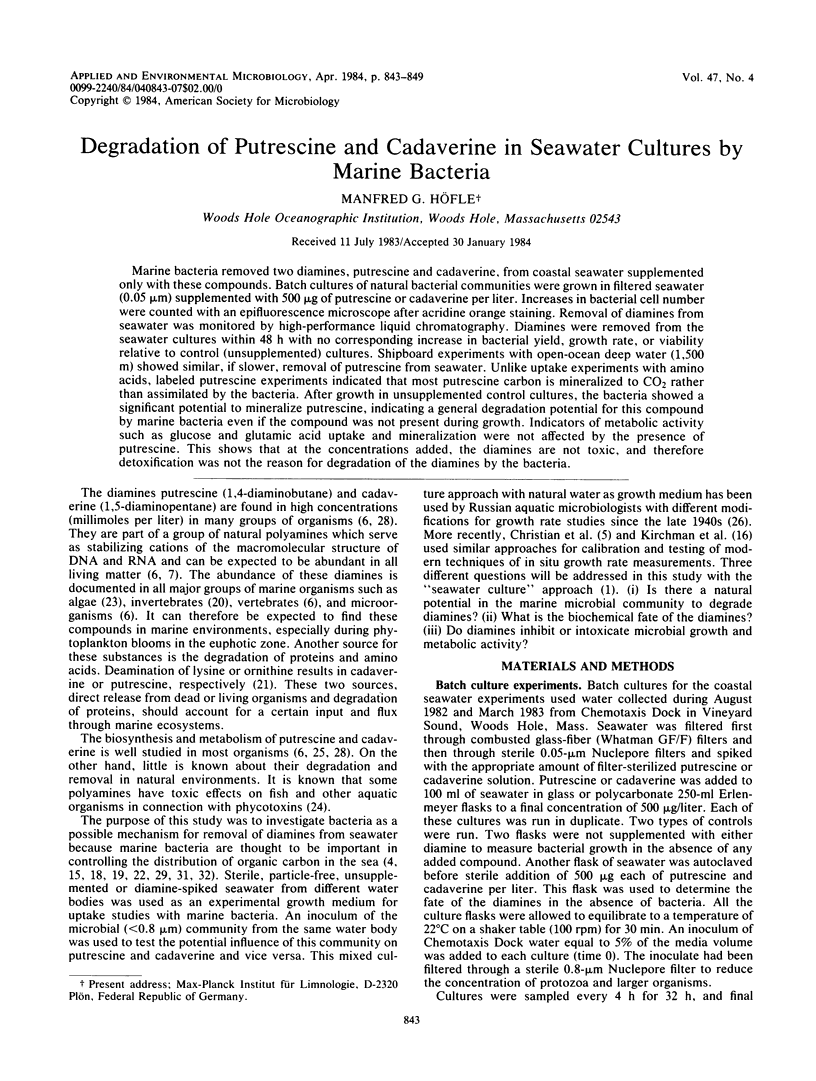
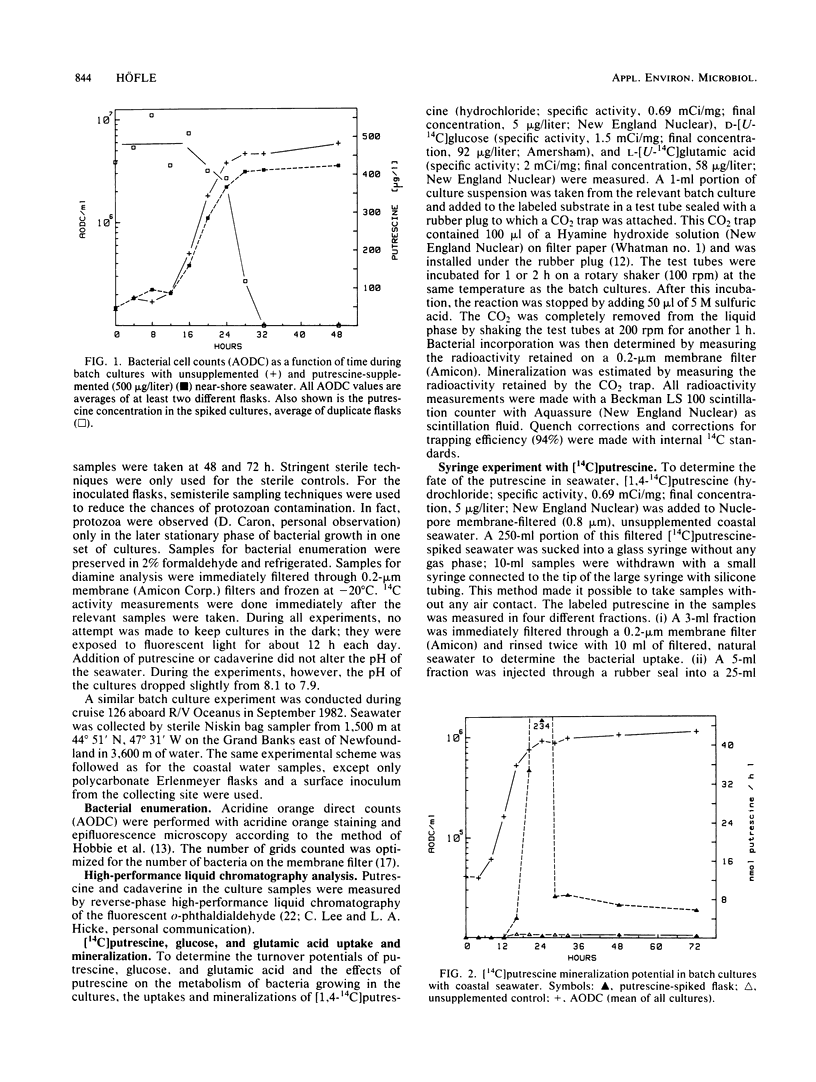
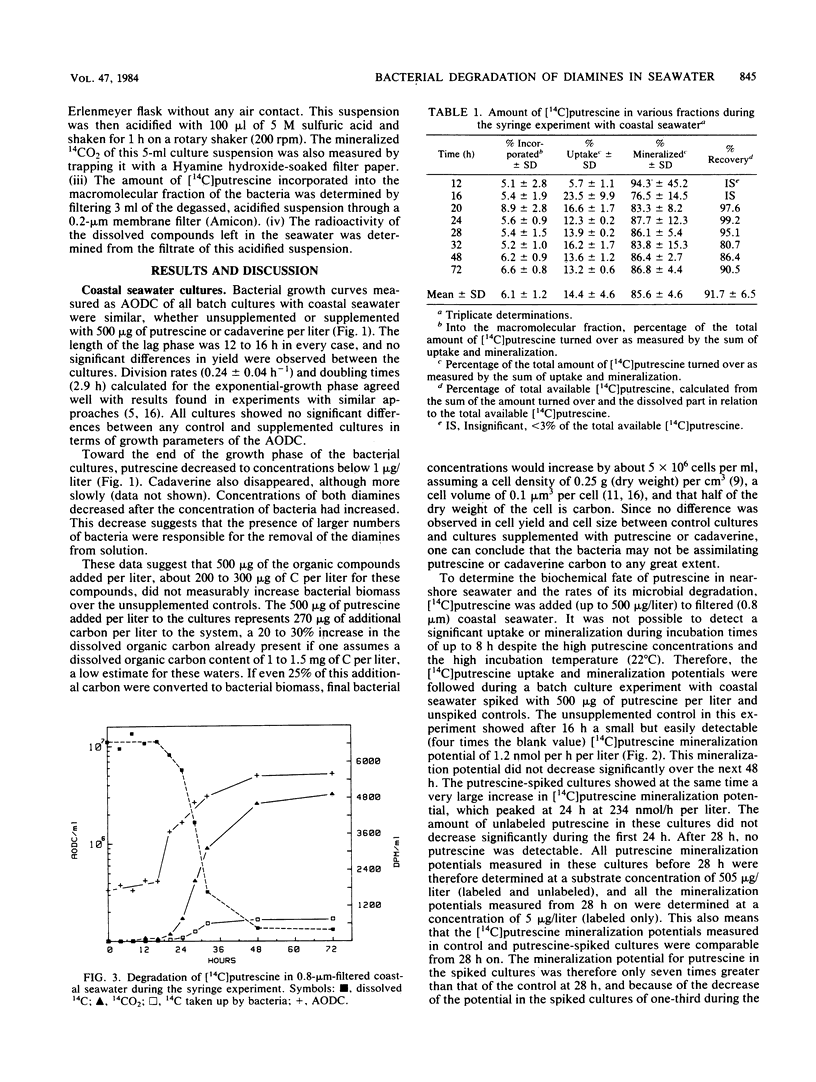
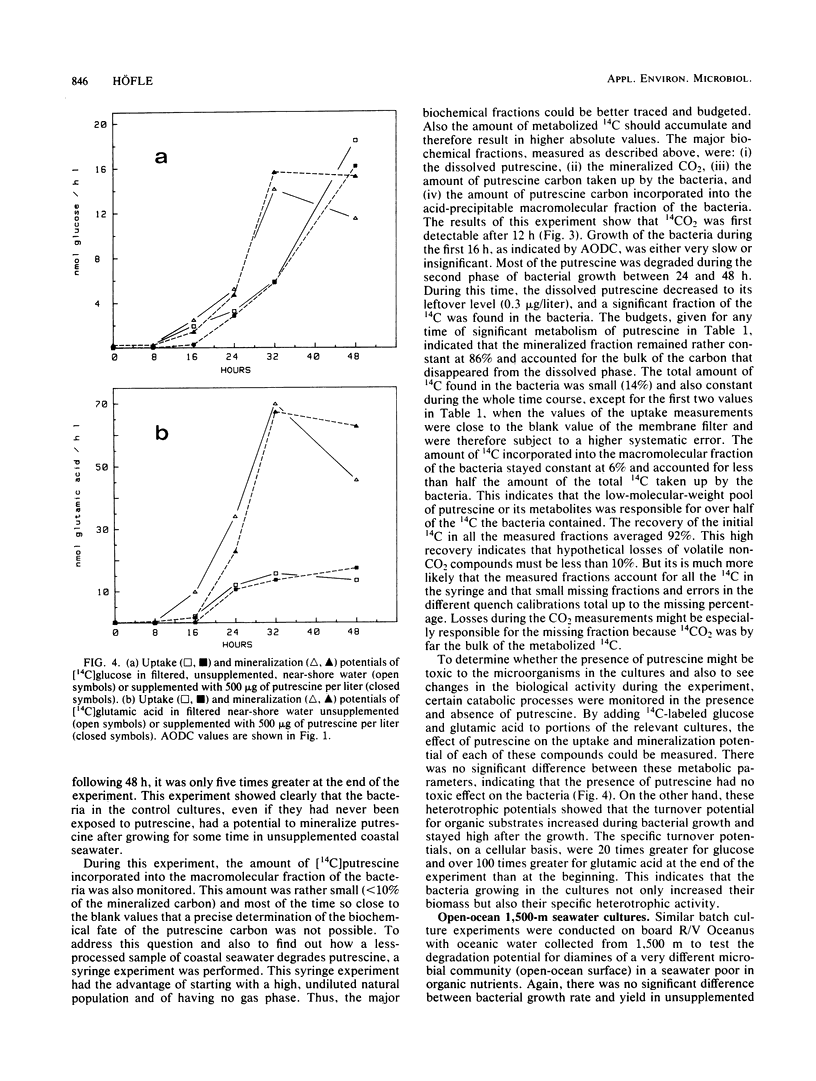
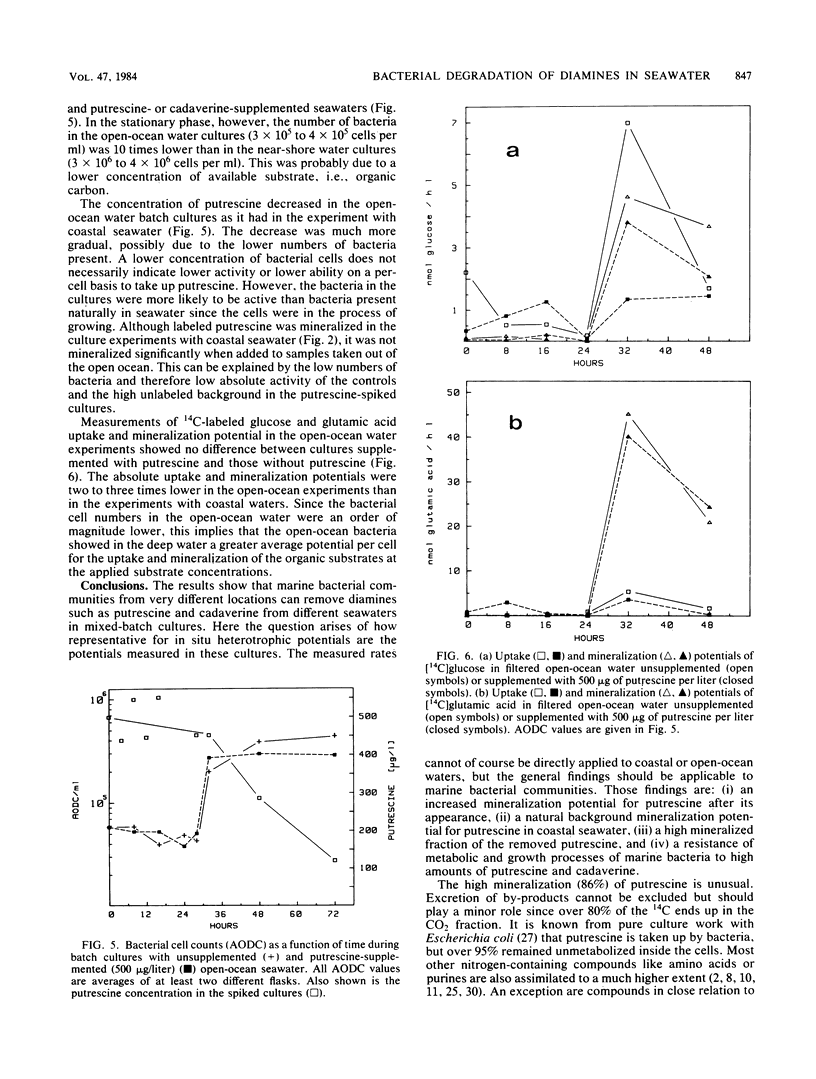
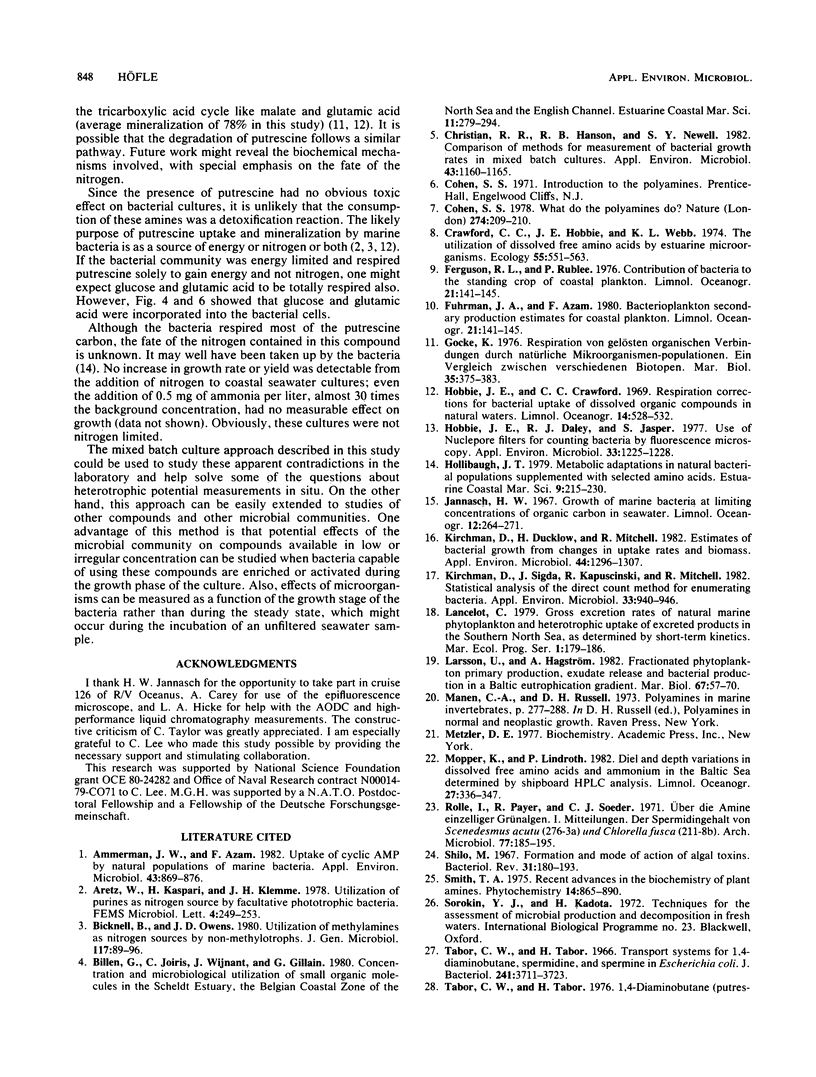
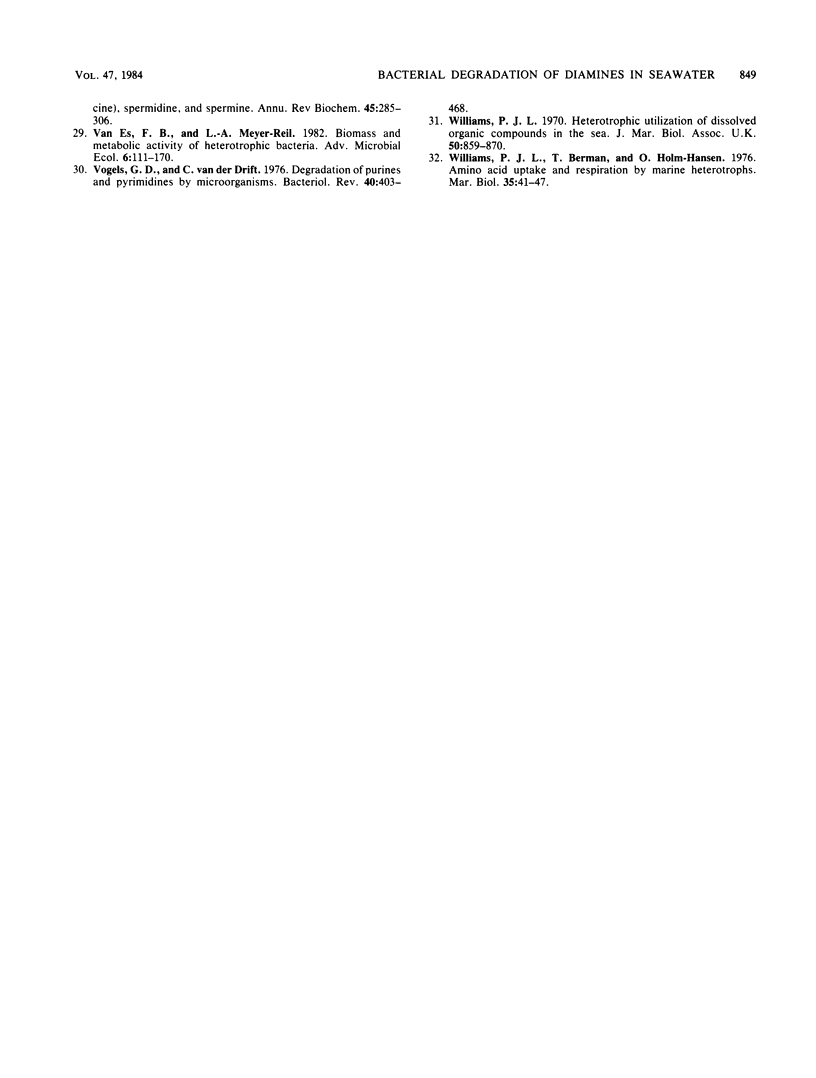
Selected References
These references are in PubMed. This may not be the complete list of references from this article.
- Ammerman J. W., Azam F. Uptake of Cyclic AMP by Natural Populations of Marine Bacteria. Appl Environ Microbiol. 1982 Apr;43(4):869–876. doi: 10.1128/aem.43.4.869-876.1982. [DOI] [PMC free article] [PubMed] [Google Scholar]
- Christian R. R., Hanson R. B., Newell S. Y. Comparison of methods for measurement of bacterial growth rates in mixed batch cultures. Appl Environ Microbiol. 1982 May;43(5):1160–1165. doi: 10.1128/aem.43.5.1160-1165.1982. [DOI] [PMC free article] [PubMed] [Google Scholar]
- Cohen S. S. What do the polyamines do? Nature. 1978 Jul 20;274(5668):209–210. doi: 10.1038/274209a0. [DOI] [PubMed] [Google Scholar]
- Hobbie J. E., Daley R. J., Jasper S. Use of nuclepore filters for counting bacteria by fluorescence microscopy. Appl Environ Microbiol. 1977 May;33(5):1225–1228. doi: 10.1128/aem.33.5.1225-1228.1977. [DOI] [PMC free article] [PubMed] [Google Scholar]
- Kirchman D., Ducklow H., Mitchell R. Estimates of bacterial growth from changes in uptake rates and biomass. Appl Environ Microbiol. 1982 Dec;44(6):1296–1307. doi: 10.1128/aem.44.6.1296-1307.1982. [DOI] [PMC free article] [PubMed] [Google Scholar]
- Shilo M. Formation and mode of action of algal toxins. Bacteriol Rev. 1967 Sep;31(3):180–193. doi: 10.1128/br.31.3.180-193.1967. [DOI] [PMC free article] [PubMed] [Google Scholar]
- Tabor C. W., Tabor H. 1,4-Diaminobutane (putrescine), spermidine, and spermine. Annu Rev Biochem. 1976;45:285–306. doi: 10.1146/annurev.bi.45.070176.001441. [DOI] [PubMed] [Google Scholar]
- Tabor C. W., Tabor H. Transport systems for 1,4-diaminobutane, spermidine, and spermine in Escherichia coli. J Biol Chem. 1966 Aug 25;241(16):3714–3723. [PubMed] [Google Scholar]
- Vogels G. D., Van der Drift C. Degradation of purines and pyrimidines by microorganisms. Bacteriol Rev. 1976 Jun;40(2):403–468. doi: 10.1128/br.40.2.403-468.1976. [DOI] [PMC free article] [PubMed] [Google Scholar]


